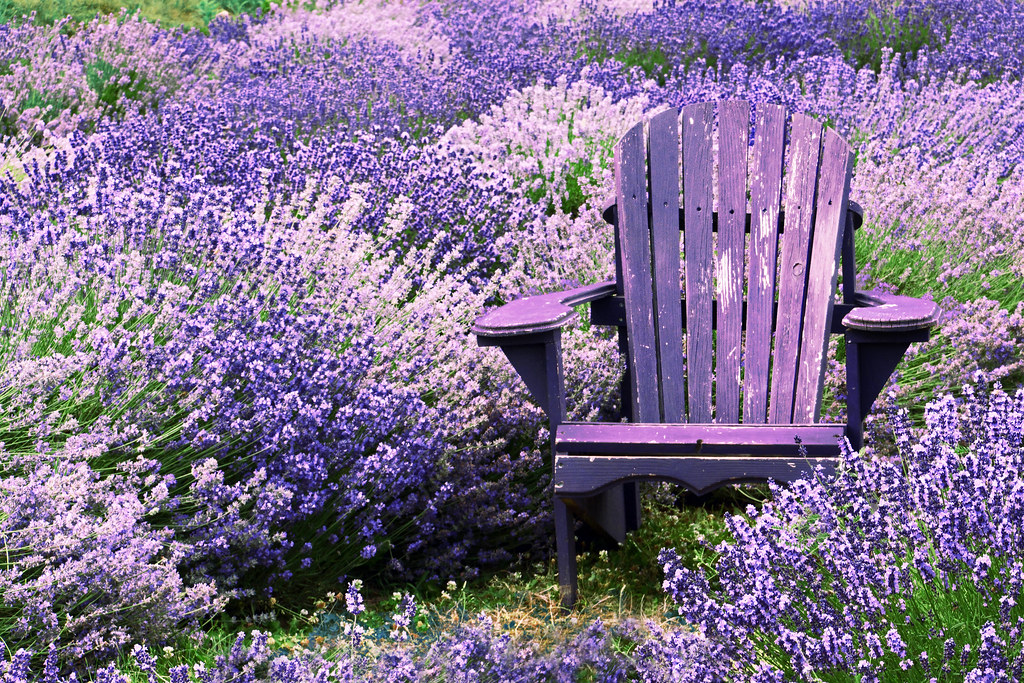
Lavender Angustifolia – English
Let’s begin with a whole lot of silly stupid crazy. What we may commonly know and believe as a particular lavender variety, may not be quite so. Where history, ancestry and classification are so important in the horticultural world, lavenders stand alone in their messy maze of confusion of origin and labelling. So let’s begin.
English lavender is not actually at all English but is native to the Mediterranean. French lavender is not actually French but is native to Spain. Italian lavender is not actually Italian but is an early hybrid of the Spanish, for example L. Avonview. Spanish lavender is not actually only Spanish but is native to the broad lower Mediterranean and northern Africa. Then there are the Dutch, the Portuguese and the Asia Minor varieties but I am not even going to attempt to go there.
Thus, the lavenders which today we collectively class as French is not French at all, but actually Spanish or maybe Italian, or a cross between the two, but definitely not French. And the more I research the more weirder and complex it all becomes. This lavender is really that, that lavender is really this, a crazy merry go round of total confusion and now I have fading confidence in reporting what is what.
Though one thing is certain. There are two general types of lavenders.
1. Spica, which include the English L. angustifolia, L. latifolia and L. lanata.
2. Spanish L. stoechas – which include L. pendunculata, L. viridis and L. dentata. However, some term L. stoechas as Italian lavender, Are you keeping up?

Lavender stoechas ‘Kew Gardens’
Regardless of the uncertain and frustrating origins and present day identification and labelling, lavenders are among the most popular plants grown in gardens. With their highly aromatic flowers and foliage, the longevity of their flower season, their ease of care, its frost, heat and drought tolerance and probably greatest of all, a major magnet for bees, they are the must have plant for any garden. A true bingo.
In response to their extraordinary popularity, the nursery I work at has a long and wide bench of 3-tiered shelving, and a good 6 metres in length, solely dedicated to lavenders, with probably 30 or more different varieties and hybrids on offer. In spring and summer when they are in full flower, it is swarming with dizzying buzzing bees and very determined customers. At these times, it seems like it is the survival of the brave.
The name Lavander comes from the Latin ‘lavare’, to wash, which alludes to the ancient custom of scenting water for the toilette with lavender oil or a few lavender leaves and flowers.
Following is my humble and valiant attempt to understand and convey some sort of sense about lavenders.
Varieties
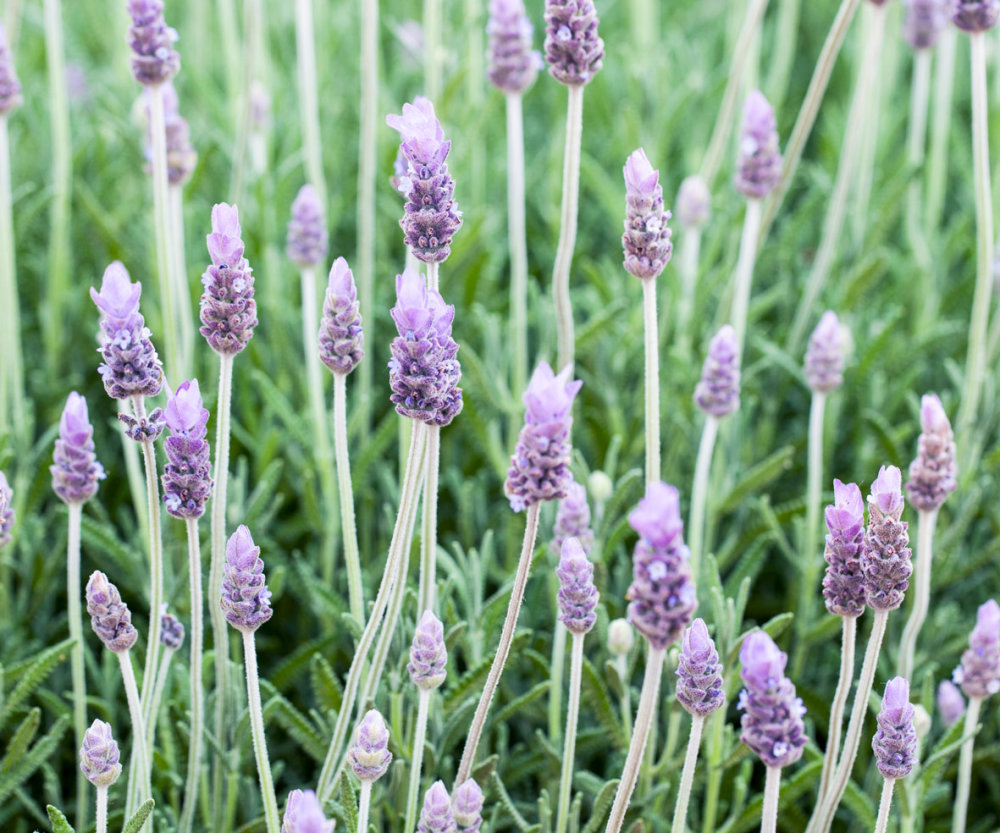
L. dentata.- French lavender
It is actually native to Spain and is also known as the fringed lavender for their bright grey green narrow leaves with defined toothed margins. While not as fragrant as other lavenders, its leaves have a rich lavender-rosemary scent. The spikes of lavender blue flowers, bloom from spring to autumn. The bush will grow to about 90cm in height and width and can also be a great choice for coastal gardens.
A natural hybrid of L. dentata is L. allardi. It is a more vigorous variety growing to 1.5 in height and width. Amazingly even in the worst miserable winter weather, they are smothered in flowers. I guess they are rarely if ever pruned, yet are still clothed top to bottom with foliage and flowers.
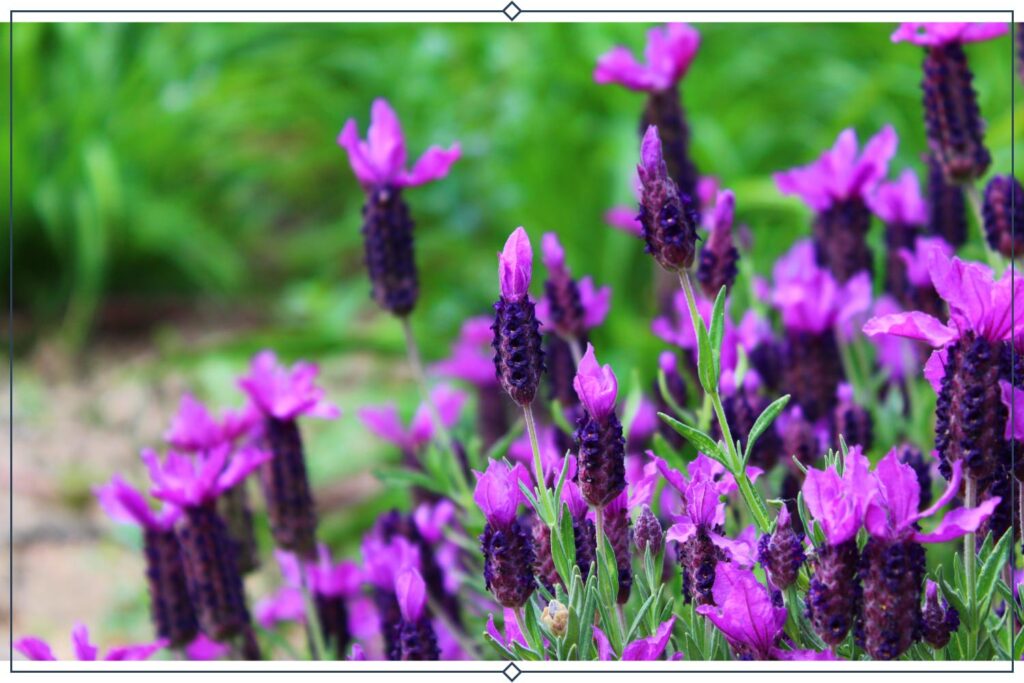 Lavender stoechas ‘Avonview’
Lavender stoechas ‘Avonview’
Lavandula Stoechas
Here lies the big bang of confusion and uncertainty. L. stoechas are generally known as Spanish lavender. However, they are also called French, Italian or butterfly lavender. They are native to the lower Mediterranean and northern Africa. Are you still with me? Here I shall collectively call them Italian, no, French is maybe better, but its truest classification is Spanish. Anyway, these lavenders’ fragrance is a mix of camphor and rosemary. Its great attraction and popularity are twofold. First, is its ability to repeat flower from spring to late summer, even through to autumn, and second for its exquisite striking flowers, with various shades of purple, blue, pink or white inflorescences at their tips, topped with distinctive upright tassels of varying colours.
Many declare they become leggy and unruly, and very soon are full of gnarled exposed wood and sport very few flowers. This is a direct result of poor and infrequent pruning, which can be difficult to time, since they seem to never shut up flowering. If you can, aim for three prunings a year. You should not ever prune back to hard, just to below the outer surface of foliage behind the old flowers. If they are an outright eyesore yank them out, for life is far too short to put up with a whole lot of ugly.
Lavandula angustifolia – English lavender.
It is native to the Mediterranean. The flowers are held atop elongated thin stems and flower throughout the height of summer. Their foliage is highly aromatic when brushed against or crushed.
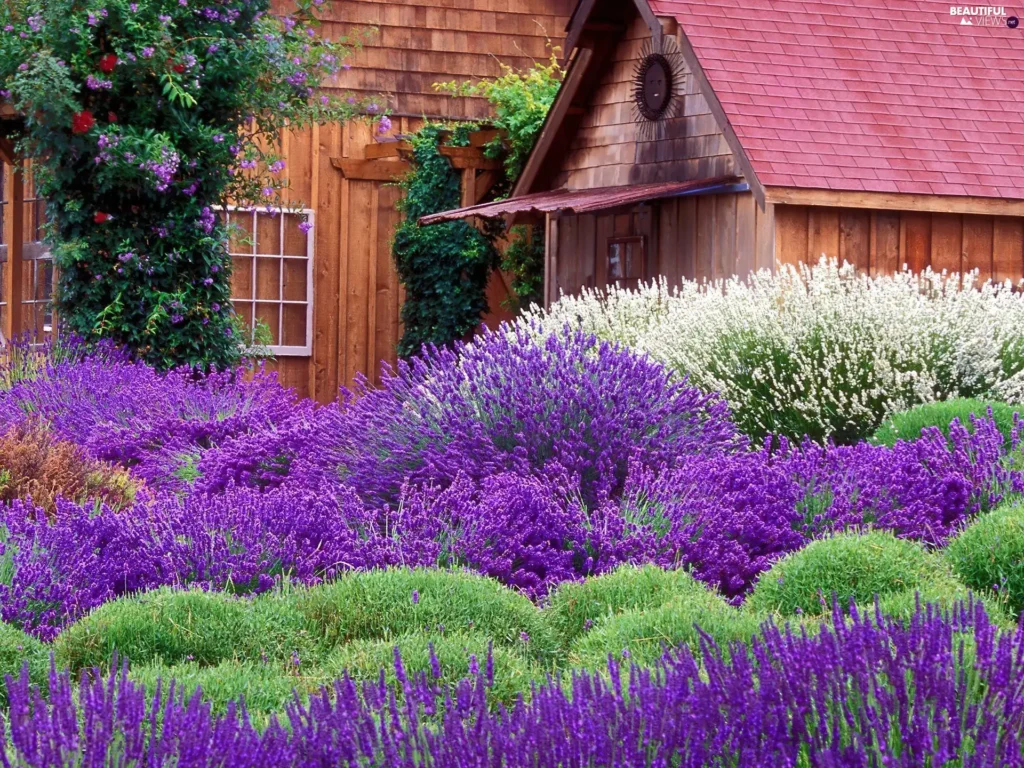
Lavender x Intermedia Grosso
The English is the one you associate with lavender fields. Grown commercially, it is cultivated for its high quality lavender oil. L. angustifolia x intermedia ‘Grosso’ is the dominant hybrid grown. It is a cross between L. angustifolia and the Portuguese variety L. latifolia, both Spica varieties. Thus, it has the cold hardiness of the English and the heat tolerance of the Portuguese.
Personally, Grosso is easily my undoubted favourite and unchallenged for its great decorative appeal with or without its flowers, 365 days a year. One of its great bonuses it is blessed with beautiful stunning steel silver foliage. If you want to plant a lavender this is the one. Its growth is larger than the common English varieties and when mature and in flower, a good metre in height and width.
One of the great advantages of the English is their ease of maintenance. It requires only an annual single good clip after flowering to just down below the top of the foliage. What will be left is a sculptural, tight, steely grey, round mound, akin to a stemless mushroom or a Miss Muffet’s Tuffet, a great structural element in any good garden design.
There are the smaller growing varieties of Hidcote and Munstead, named after iconic, old established gardens in rural England. Both now are National Trust gardens. They also are popular and generally available in punnets or tube stock, so are quite cost effective for both small and large landscaping endeavors.
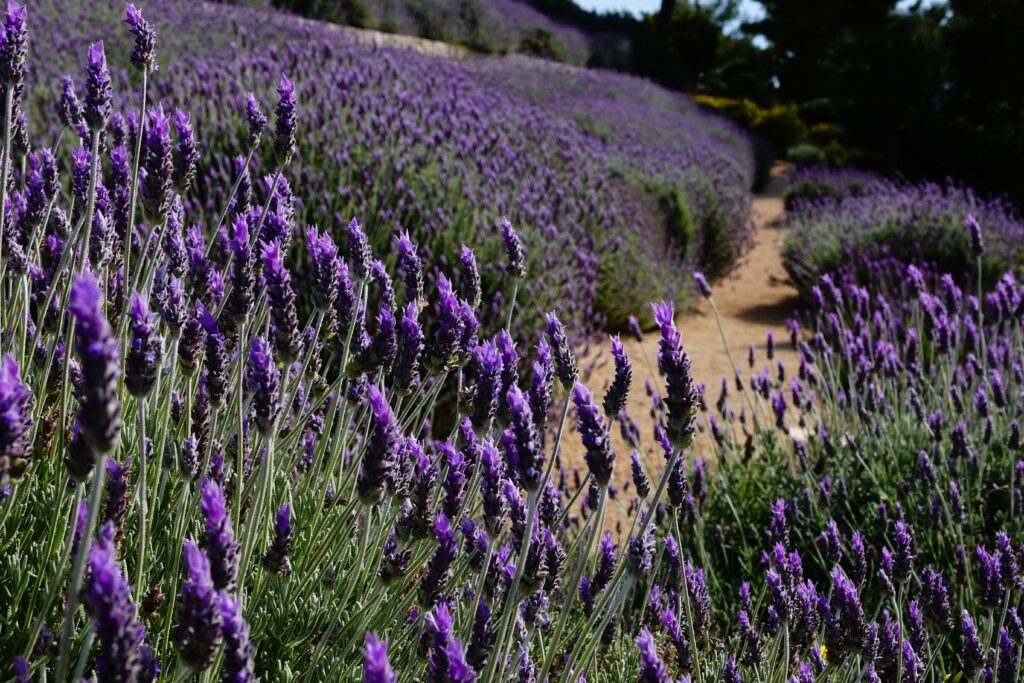
Cultivation
Heavy and clay soils may be your only foe or nemesis, for lavenders desire a relatively free draining soil. In heavy soils they are perfect for sloping sites or terraced built up areas.
When first planting, regular watering is suggested to get their root systems established and then once mature, little to no watering is needed.
If you are up to it and want top notch lavenders, you can apply lime in spring and autumn blood and bone. You can also add potassium in spring for more intense colour and stem strength. And don’t forget the application of Seamungus, for the overall health of the soil and the plant, and its ability to counteract stress due to heat and drought.
So be it Spanish, Italian, French, English or Portuguese, and the endless hybrids bred from them, they are all lavenders worthy of inclusion in any garden. I have thought about just collectively calling them all European lavenders, but then I forgot to include the north African and Asia Minor varieties.
Amid the confusion, happy gardening and just have fun,
Regards Ned McDowell